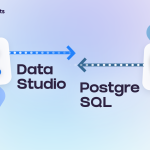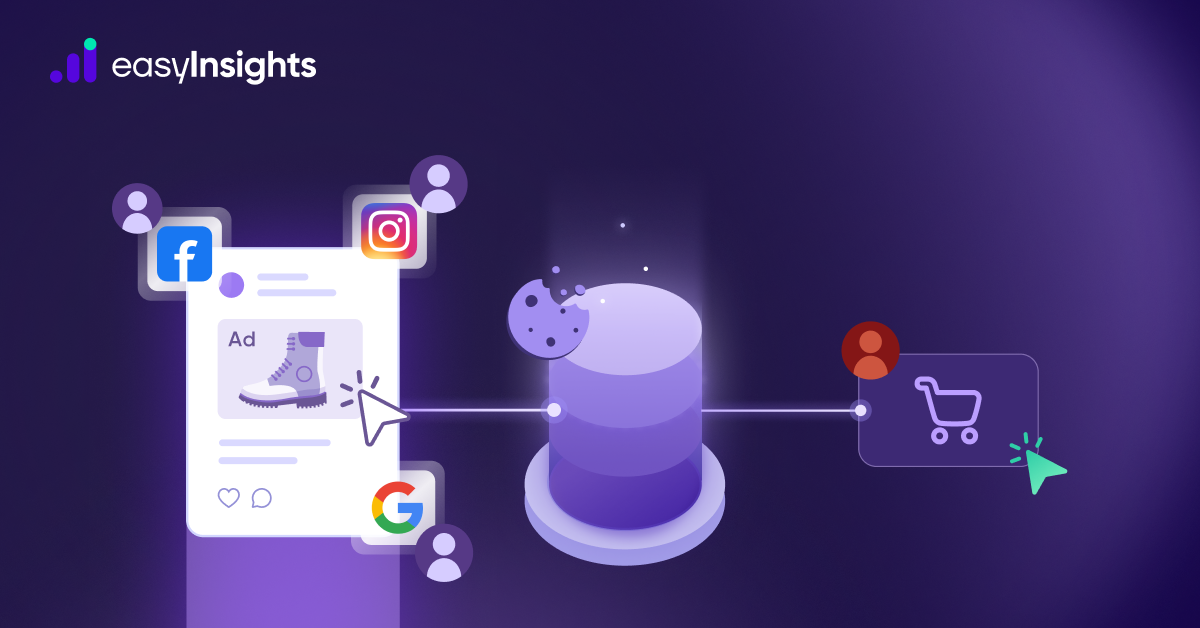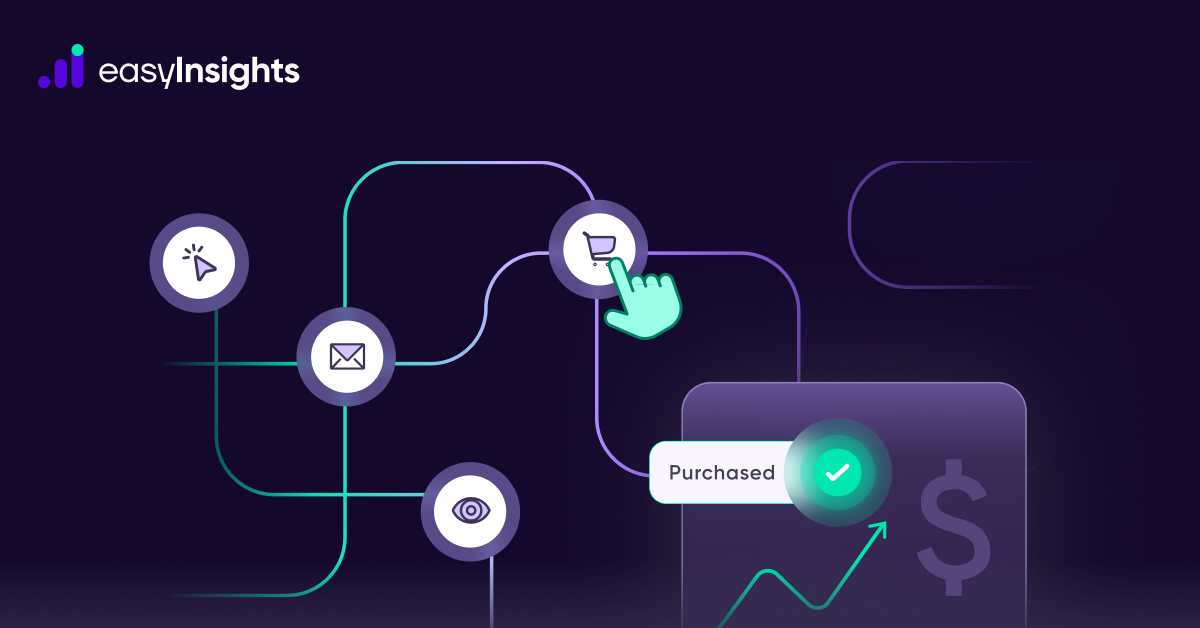
What is new and better about Google Analytics 4? How can it improve data analysis for you and hence deepen customer engagement with your brand and increase conversions? How different is it from Universal Analytics and why should you switch? Let’s try and explore the answers to these pertinent questions in this article.
The new GA4 is here to help you improve measurement of the overall impact of all your marketing investments at one place, and measure the entire customer journey, consolidating Web + App data. It maps the complete user journey from web to app and back and the myriad permutations that your customers may have, hence helping you analyze their behaviour and your data better. Universal Analytics (the standard version of Google Analytics) measures web and App data separately.
Google Analytics 4 was created due to a rapidly evolving world and increasingly complex consumer journeys and changes in online privacy policies. Consumers are not only interacting with brands on multiple devices, but over multiple sites, apps and browsers. Owing to the number of touch points for marketers and complexity of user journeys, there has been an increase in demand to track and quantify these. Universal Analytics had a session-based model to collect data and is unequipped to do all this.
Jump ahead to:
Basic differences in UA and GA4
Let’s look at some of the elementary differences.
1. Measuring models
Universal Analytics uses a measurement model based on sessions and pageviews, whereas Google Analytics 4 has a measurement model based on events and parameters. In UA, sessions are a group of user interactions or hits on a website within a certain timeframe. A session could mean multiple pageviews, events and transactions. In GA4 all hits are events and events contain parameters, hits being any user interactions with the website.
| Google Analytics 4 | Universal Analytics |
| Event | Page view |
| Event | Event |
| Event | Social |
| Event | Transaction/e-commerce |
| Event | User timing |
| Event | Exception |
| Event | App/Screen view |
2. Gaps in data
There are potential gaps in user data in Universal Analytics due to privacy measures opted by users, whereas GA4 uses Google Signals and machine learning to plug a lot of holes in missing data.
3. Data Privacy
Data privacy is central to GA4. There is a ‘Consent mode’ which provides marketers with separate consent options for analytics and for ads. GA4 does not store any IP addresses and data deletion options have also been improved.
4. Data streams for the omni-channel environment
With the rise in the percentage of smartphone owners and Google already rolling out mobile-first indexing, data collection and reports from an omni-channel environment can help us understand the full user journey. This is provided only by GA4.
In GA4, you can have multiple data streams in a single property, meaning data from a website, iOS app and Android app at one place. This is very useful if you have two websites or a website and an app or multiple sites and apps, as you can see how your users interact with your properties, all in one place. In UA, which was developed as web only, you had a separate property for each data source – web, iOS app, Android app.
5. Free connection to BigQuery
GA4 gives a free connection to BigQuery. BigQuery is an enterprise data warehouse, which enables very large and complex data sets to be queried very quickly.
Here’s a handy guide if you want to learn how to export your raw data from GA4 to BigQuery.
For a deep dive into the feature differences between Universal Analytics and Google Analytics 4, please read our article here.
New features of Google Analytics 4
1. More intuitive control with user-centric engagement metrics
Google Analytics 4’s powerful user centric metrics and dimensions use Artificial intelligence and machine learning to predict customer actions and implement more intelligent tracking and predictive analytics. There is more intuitive control over the kind of personal data that is collected, enabling compliance with GDPR privacy laws.
Bounce rate is out and has been replaced with Engagement rate. In GA4, a session is considered engaged when it lasts at least 10 seconds, has at least one conversion event or involves at least 2 page views.
GA4 metrics give a holistic view of website visitor behaviour and actions. There is a new feature called Enhanced events.
Enhanced events include –
1. Scroll data
2. File downloads
3. Site search
4. Video engagement
The best part is you don’t need to know any coding, for such in-depth tracking and can easily locate the content that is most engaging for users and converting into action and what needs improvement.
2. In-depth insights about your customer
GA 4 is insight-centric. It has advanced machine learning models, which alert you to significant trends in your data, such as products whose demand is increasing because of new customer needs. The insights can also help you anticipate future actions your customers may take. You can calculate ‘Churn Probability’ which can help you be efficient in your retention marketing efforts, and hence make better use of your marketing budget.
Churn Probability is the probability that a user who was active on your website within the last 7 days won’t be active in the next 7 days.
Churn Probability = (Lost customers ÷ Total customers at the start of time period ) x 100
The other two predictive metrics supported by GA 4 are Purchase probability (the probability that a User who was active in the last 28 days, will make a purchase event within the next 7 days) and Revenue prediction ( the revenue expected from all purchase events within the next 28 days by users who were active on site in the last 28 days)
There’s also predictive metrics that can help create high value customers and take action on them to improve your results. Go here to read more on predictive capabilities in Google Analytics 4
“The new Analytics can automatically alert you to significant trends in your data… For example, it calculates churn probability so you can more efficiently invest in retaining customers at a time when marketing budgets are under pressure.” – wrote Vidhya Srinivasan, VP Measurement, Analytics, and Buying Platforms at Google.
The capacity to measure web and App interactions together, GA 4 can include conversions from YouTube engaged views that may occur in-app or on the web. Comparing conversions that are from YouTube video views, Google and other paid channels, organic channels like Search, social etc. helps you understand the combined impact of all your marketing efforts.
The smarter insights from GA4 will enable marketers to optimize around the actions that matter most to their customers and improve ROI on marketing decisions.
3. Holistic view of the customer journey
Google Analytics 4 no longer fragments measurements based on device and platform, like its predecessor Universal Analytics. Instead, GA4 offers customer-centered measurements using Google Signal data that provide a detailed prediction of how users interact with your brand. Google Signals are session data from sites and Apps that Google associates with users who are signed in to their Google accounts and who have turned on ad personalization. With Google Signal, Google is able to track users across multiple sites and apps which enables cross-device reporting, cross-device remarketing, and cross-device conversion export to Ads.
With this, managers can now see how customers interact with the web and app in a granular and interconnected way. They get to see every step of the conversion process and pull insights from the customer journey.
4. Improved reporting
The reporting visualizations in Google Analytics 4 are better. The real time analytics have become more engaging and flexible
Analysis Hub, is one of the most important features of Google Analytics 4. It is a collection of advanced analysis techniques and goes way beyond your standard reports. The tools that were previously available only to GA360 customers are now available to everyone for free with GA4.
What does Analysis Hub provide?
- Heat maps as an additional dimension
- Segment overlap reports, that shows relationship between targeted segments
- Funnel customization options that enable set up of specific funnels
- User explorer report for your most relevant user segments
- Path analysis to identify common navigation paths taken by users across the website
- Visualization techniques to apply to your analysis
- Export analysis data in several formats
5. Easy events setup
GA4 makes goal tracking and setup very easy, compared to previous iterations. It pre-makes some events and actions. It’s a lot easier to use for those marketers who have checkout and application forms on 3rd party sites or subdomains.
Events in GA4 can be grouped into 4 categories
- Automatically collected events – These are automatically tracked when you install GA4 base code, such as page_view, first_visit etc.
- Enhanced measurement events – These can be enabled or disabled depending on website functionality. These are also automatically collected alongside base code. Eg. Scrolls, outbound clicks, video engagement
- Recommended events – These are events that you implement but have predefined names and parameters. These events unlock existing and future reporting capabilities.
- Up to 500 Custom events – You can create and implement, based on website requirements. Custom reports or explorations need to be created for these for meaningful analysis.
Why to shift to Google Analytics 4?
Google Analytics 4 is the next generation measurement solution, replacing its older version, Universal Analytics. As announced by Google, on July 1st, 2023, standard Universal analytics properties will stop processing new hits.
As you now understand, Google Analytics 4 is completely different from its predecessor, Universal Analytics. It will require you to learn the system from scratch. We recommend setting up your Google Analytics 4 property now, so that you can start learning how it works and how to integrate it into your workflow. This way, you will also be able to build the necessary historical data before Universal Analytics stops processing new hits.
We recommend you continue running your Universal Analytics concurrently for now, as there will be a learning curve for you with Google Analytics 4 and you don’t want your marketing efforts to suffer during the transition.
Final Thoughts
Google Analytics 4 is a complete do-over of the Universal Analytics we knew. Several familiar metrics and standard reports will be gone, which is not comfortable for many marketers. There will be a lot of new learning which is needed to understand how to best use this tool to scale your business.
On the bright side, GA 4’s new data model, a new streamlined interface, flexible reporting, data-gaps filling capabilities, predictive analysis capabilities and an immersive learning of your customers entire journey and experience make it a robust and flexible tool for marketers navigating a complex consumer world of technological improvements, stringent privacy laws, evolving consumer behaviour and needs.
We hope this article has helped you understand what Google Analytics 4 has to offer and why it’s important to start integrating it now. Click here to start today!








